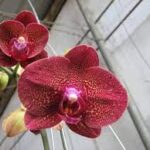Money Cat in Folk and Traditional Arts: A Whisker’s Tale of Cultural Richness
Exploring the Charm of Money Cat in Folk and Traditional Arts:

In the heartwarming embrace of folk and traditional arts, Money Cat emerges as a beloved figure, weaving its way into the fabric of cultural expression and creativity. This article embarks on a journey through the realms of folk and traditional arts, where the iconic feline figure becomes a cherished symbol, connecting communities through the shared narratives of tradition.
1. Folk Paintings and Artisanal Craftsmanship:
Money Cat graces the canvases of folk paintings, a testament to the artisanal craftsmanship embedded in traditional art. Skilled artists paint vivid depictions of the feline figure, capturing the essence of cultural symbolism in every brushstroke and color palette.
2. Handcrafted Textiles and Traditional Garments:
In the realm of traditional arts, Money Cat finds a home in handcrafted textiles and traditional garments. Artisans intricately weave or embroider Money Cat motifs into fabrics, creating garments that not only celebrate cultural heritage but also showcase the artistry of traditional craftsmanship.
3. Wooden Carvings and Sculptural Traditions:
Wooden carvings bring Money Cat to life in the rich traditions of folk art. Skilled woodcarvers sculpt charming figurines that embody the cultural significance of Money Cat, transforming raw materials into whimsical and meaningful artworks.
4. Ritualistic Masks and Cultural Celebrations:
Money Cat symbolism adorns ritualistic masks used in traditional ceremonies and cultural celebrations. These masks, crafted with precision and artistic flair, become integral elements in performances that honor cultural traditions and connect communities through shared festivities.
5. Pottery and Ceramics with Cultural Flourish:
Traditional potters and ceramic artists infuse Money Cat symbolism into their creations. From functional vessels to ornate figurines, these handcrafted pieces carry the spirit of cultural richness, allowing individuals to incorporate tradition into their daily lives.
6. Traditional Dance and Symbolic Movements:
Money Cat becomes a source of inspiration for traditional dance forms. Dancers, adorned with costumes inspired by the feline figure, use symbolic movements to tell stories of prosperity and cultural significance, bringing the charm of Money Cat to life through rhythmic expressions.
7. Storytelling through Folklore and Performance:
In folk arts, Money Cat becomes a central character in storytelling traditions. Folk artists and performers share tales of the feline figure through oral traditions, puppetry, and performances, passing down cultural narratives to future generations.
8. Cultural Festivals and Processions:
Cultural festivals feature Money Cat in lively processions and traditional performances. The feline figure becomes a symbol of joy and prosperity, contributing to the vibrant atmosphere of celebrations that unite communities in a shared appreciation for tradition.
Conclusion:
Money Cat’s integration into folk and traditional arts serves as a testament to its enduring charm and cultural significance. As artisans, performers, and storytellers infuse the feline figure into their creations and narratives, Money Cat becomes not just a symbol but a living part of cultural traditions. In the harmonious dance of color, form, and tradition, Money Cat continues to enrich the vibrant tapestry of folk and traditional arts, leaving its paw prints on the collective heart of communities that cherish and celebrate their cultural heritage.

